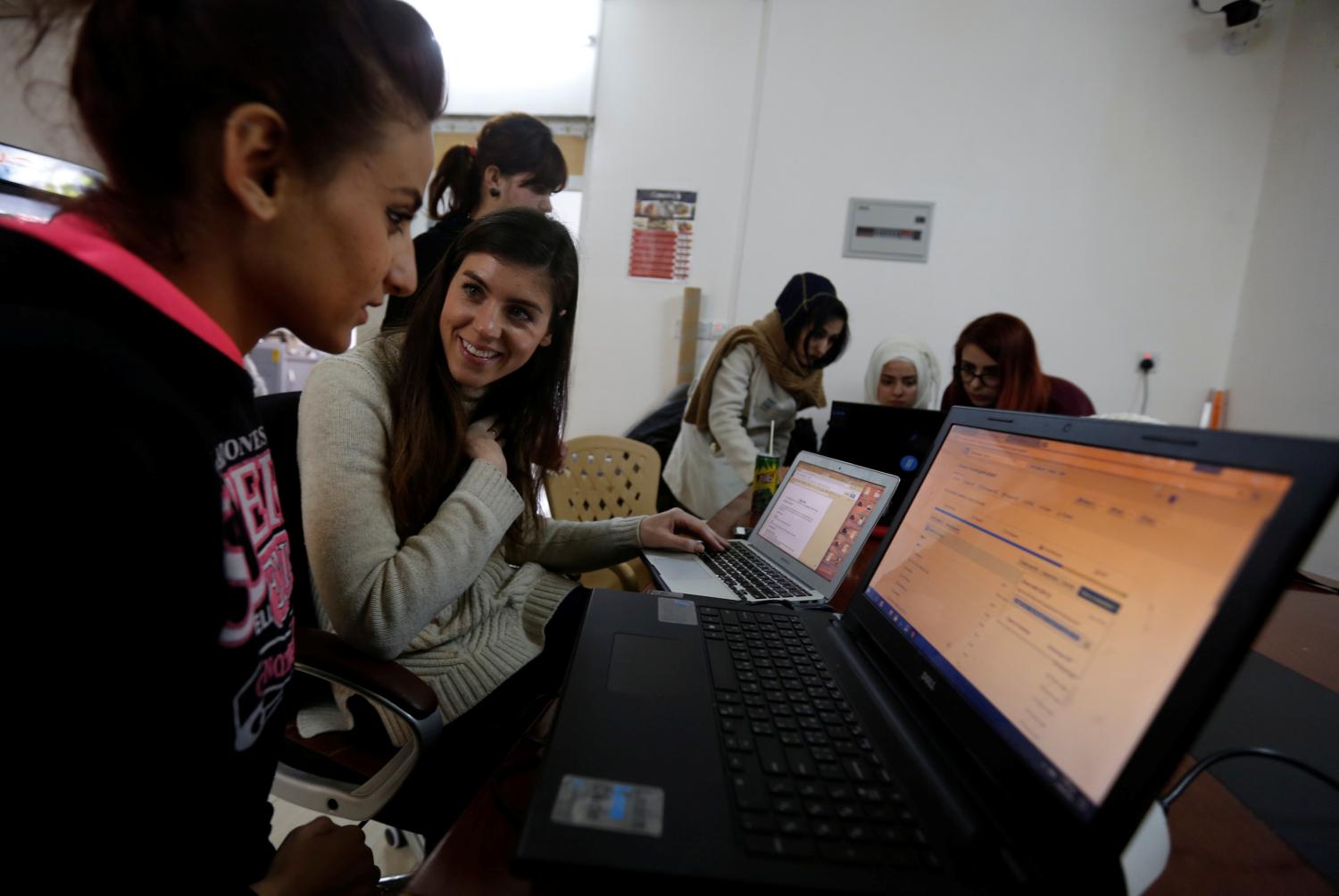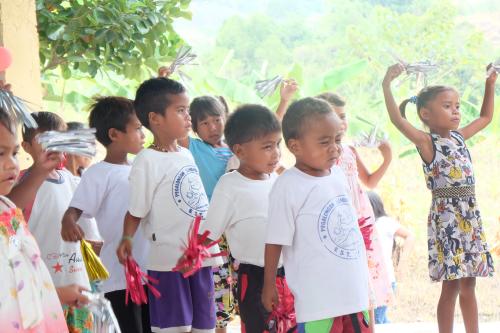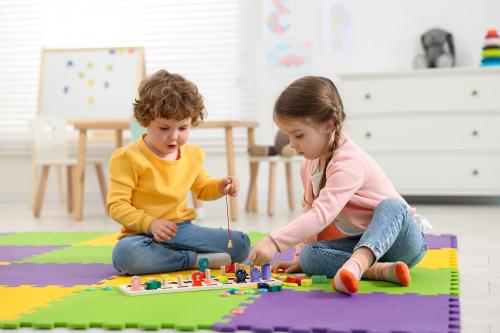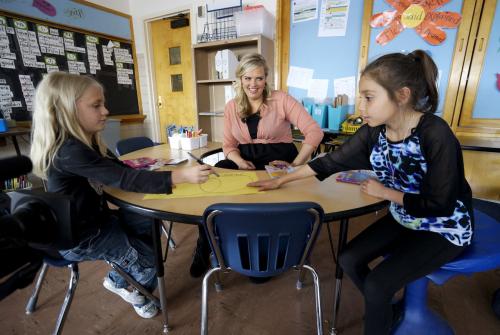It is a commonly held conviction in the early childhood education community that young children learn most effectively, if not exclusively, through play.
What’s more, a growing body of research indicates that teachers who master these concepts can improve learning development in children. Providing a preschool environment friendly to daily play-based learning is a daunting challenge, however, and there is often a chasm between rhetoric and practice.
That may be one reason why I so enjoyed my recent trip to Bangladesh as part of BRAC’s Play Consortium, a group of early childhood education professionals advising the Play Lab project. The Play Lab project is a partnership between the LEGO Foundation (Editor’s note: The LEGO Foundation supports the Center for Universal Education at Brookings through the Skills for a Changing World project), BRAC International in Uganda and Tanzania, BRAC USA, and the Centre for Play at BRAC University’s Institute of Educational Development in Bangladesh.
Working closely with local communities, the Play Lab project trains Play Leaders in play-based pedagogy, engages parents to help create toys with local materials and decorate learning spaces (the labs of the project name), and enlists experts to design context-specific curricula—all with an important goal to promote learning through play in developing country contexts.
In Play Lab communities in Bangladesh, I saw the enthusiasm with which community members embraced the new buildings and outdoor play spaces. It was uplifting to meet young women trained by BRAC as Play Lab Leaders, to see the warmth and skill displayed with children, and to witness the fun mothers had creating sustainable and appropriate toys to support their children’s play.
Since the U.N. established its Millennium Development Goals in 2000, a worldwide effort has sought to get children enrolled into and finishing primary school. By 2015, however, it was widely recognized that the massive push on primary education was insufficient. The U.N. Sustainable Development Goals, targeted through 2030, seek to “ensure inclusive and equitable quality education and promote lifelong learning opportunities for all,” including a specific target for quality early childhood development and preschool education.
This shift was partly the result of high dropout rates in the later primary years in many developing countries. It also owes something to the accumulation of research evidence that shows high quality preschool can reap staggering improvements in a range of desirable outcomes (excellent examples include the Perry Preschool Project and the North Carolina Abecedarian preschool program).
According to an emerging consensus among developmental psychologists, as I wrote recently, one key element of high quality preschool is learning through play. There are four important ways that adults can enhance children’s learning through play.
Fundamentally, adults need to create an emotionally secure and supportive environment. Evidence demonstrates that children are most likely to engage in the most complex forms of play, involving risk and challenge, when they feel safe. In these types of play, children push their limits in oral expression and in emotional and cognitive self-regulation, deriving the most developmental benefit.
Second, it is important to provide for the full range of play opportunities. I have written elsewhere about the five types of play, and each are essential:
- Physical play: in addition to the impact on physical skills and health, growing evidence shows improvements in concentration, perseverance and other aspects of self-regulation. One key sub-type is “rough and tumble,” which may be mistakenly discouraged by adults, but which research indicates is strongly associated with emotional intimacy, social understanding and the control of aggression.
- Play with objects: develops from sensory and exploratory play in babies to arranging, sorting and ordering activities in toddlers, and subsequently to life-long building and making activities. In addition to understanding objects and materials, this play appears to improve the early development of reasoning and problem solving.
- Symbolic or semiotic play: consists of play with the many symbolic systems that humans use to communicate meaning, including language, gestures, sculpture, drawing, mathematics, music, dance and so on. This play supports both communicative and regulatory functions as well as the development of specific skills.
- Pretend play: is easily the most researched aspect of children’s play. It begins, at age one, with simple object substitutions and evolves over time into dressing up, role playing and other increasingly complex, cooperative and social scenarios. Children are often capable of achieving a unique level of skill or concentration in this play, and it can nurture high levels of social competence, expressive language skills, and self-control.
- Games with rules: develops from early peek-a-boo and physical games to card and board games and, eventually, computer games. In addition to learning about rules and social interaction, by playing with others, games support planning and strategy skills.
The third and fourth aspects involve direct involvement from adults. Typically regarded as “guided” play, adults may structure play by setting playful tasks or challenges and developing play narratives. Constraining play in these ways increases the challenge for children and enhances the complexity of their play and the level of their learning.
Finally, adults can participate in children’s play, either alongside or by taking a role in a pretend scenario. This requires great sensitivity and, especially, allowing the child to lead and initiate. Research has shown an improvement in the expressive language used in such play, and in the attendant social regulation skills.
Developing the skills and understandings required to provide a high quality playful learning environment for young children is a significant undertaking. I am optimistic that the Play Labs project will demonstrate the benefits of applying playful learning in developing countries, bridging the divide between practice and theory and dramatically improving the lives of the most vulnerable children and their caregivers.
As Shakespeare wrote more than 400 years ago, the play, in fact, may just be the thing.
The Brookings Institution is committed to quality, independence, and impact.
We are supported by a diverse array of funders. In line with our values and policies, each Brookings publication represents the sole views of its author(s).







Commentary
The play’s the thing: Active pedagogies to improve learning
May 24, 2017